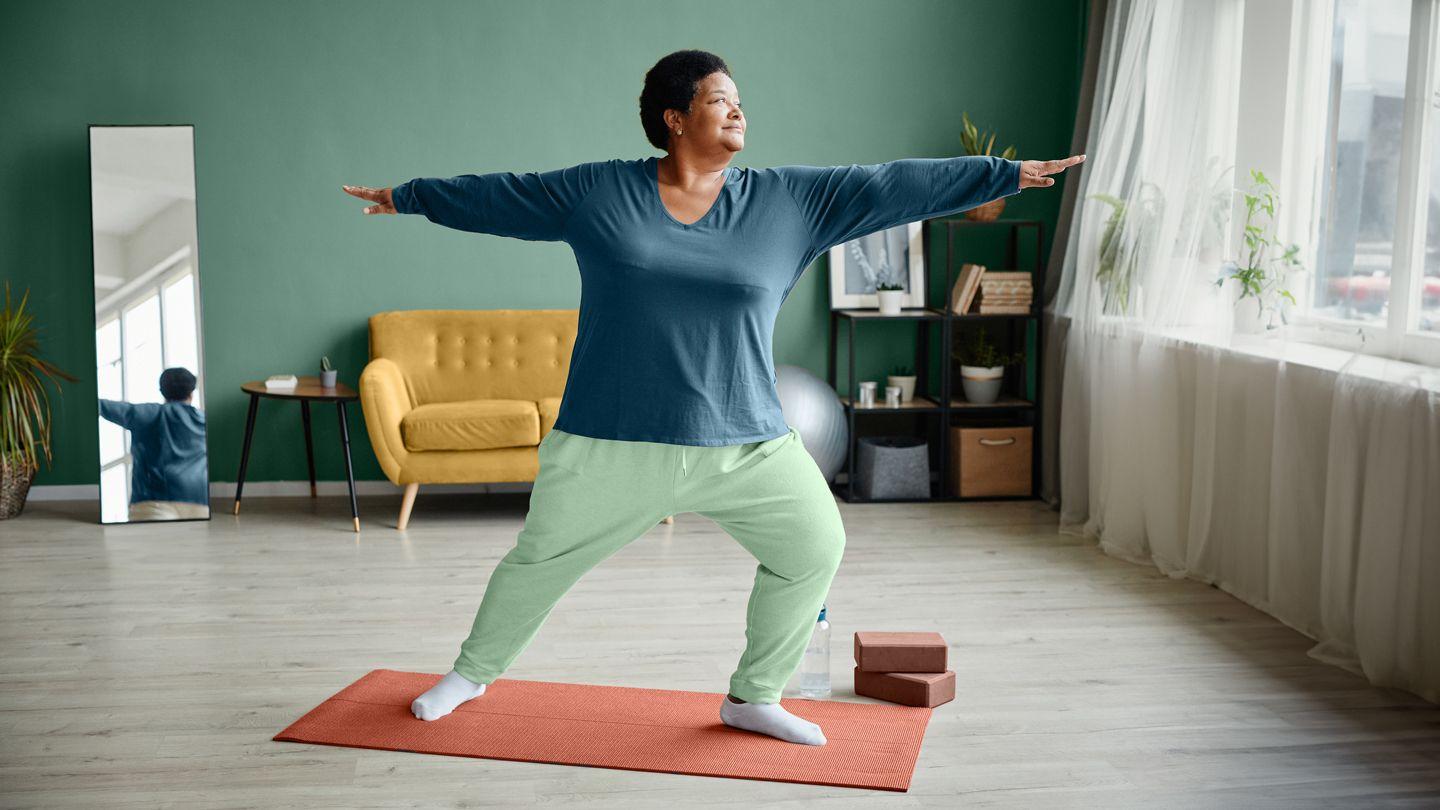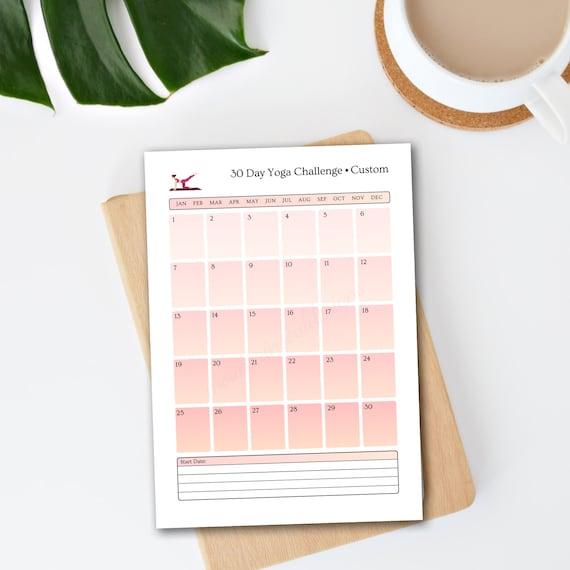Challenging Yoga Sequences to Push Your Limits
In an age where mindfulness and physical fitness dance hand in hand, the practice of yoga emerges as a transformative journey—one that beckons us to delve deeper into our own capabilities.While many embrace yoga for its calming influence and meditative qualities, there exists a parallel realm of dynamic sequences that entice practitioners to push their boundaries and explore new heights. this article invites you to step onto your mat and engage in a series of challenging yoga sequences designed to test your strength, versatility, and mental fortitude.Whether you are a seasoned yogi seeking an invigorating challenge or a curious beginner ready to expand your horizons, these sequences will encourage you to break through barriers, redefine your limits, and discover the power that lies within both your body and mind. So roll out your mat, take a deep breath, and prepare to embark on a journey that promises not only physical growth but also profound personal insight.
Table of Contents
- Exploring Unconventional Poses to Elevate Your Practice
- Integrating Breath Work for enhanced Focus and Endurance
- Building Strength and Flexibility Through Dynamic Transitions
- Crafting a Personalized Challenge: Tips for Progression and Safety
- Q&A
- In Retrospect
Exploring Unconventional Poses to Elevate Your Practice
To truly cultivate growth in your yoga practice, it’s essential to step outside your comfort zone and embrace unconventional poses that encourage strength, flexibility, and focus. Exploring these challenging asanas can unveil new facets of your physical capabilities while also providing mental clarity. Consider integrating the following poses into your sequences:
- Wild Thing (Camatkarasana): A heart-opening pose that ignites the spirit and helps to build confidence while engaging the core.
- Forearm Stand (Pincha Mayurasana): an inversion that cultivates balance and engages the shoulders,fostering a sense of control and perspective.
- Handstand (adho Mukha Vrksasana): This iconic pose requires strength, focus, and fearlessness, pushing you to break through mental barriers.
Incorporating these poses into your practice can also be enhanced by sequencing them mindfully to build upon the strength gained in each position. An example of an effective sequence might include:
| Pose | duration | Focus |
|---|---|---|
| Wild Thing | 5 breaths | Heart-opening |
| Forearm Stand | 5 breaths | Core engagement |
| Handstand | 3 breaths | Balance and strength |
Each of these elements interacts harmoniously to support personal growth on and off the mat, ensuring that your practice evolves and remains invigorating. embrace discomfort, trust in your body, and watch the transformative effects unfold in your yoga journey.
Integrating Breath Work for Enhanced Focus and Endurance
Incorporating breath work into your yoga practice can considerably enhance both your focus and endurance. By consciously connecting your breath with movement, you create a powerful synergy that allows for deeper concentration and increased stamina during challenging sequences. When you harness your breath, you can maintain a steady rhythm even when your muscles begin to tire, enabling you to push through difficult postures with a calm, clear mind. This mindful approach can transform your yoga sessions into profound experiences of self-finding and empowerment.
To effectively integrate breath work, consider practicing the following techniques:
- Ujjayi Breath: Often referred to as “victorious breath,” this technique involves constricting the throat to create a soft sound during exhalation, helping to maintain focus and rhythm.
- Nadi Shodhana: Alternate nostril breathing balances the right and left hemispheres of the brain, promoting mental clarity and peace.
- Diaphragmatic Breathing: Emphasize deep belly breathing to activate the diaphragm fully, increasing oxygen intake and promoting relaxation throughout the body.
By weaving these breathing techniques into your routines, you not only challenge your physical limits but also cultivate a greater sense of presence and mindfulness. Here’s a simple comparison of breath work techniques to consider for your practice:
| Technique | Benefits |
|---|---|
| Ujjayi Breath | Enhances concentration and maintains energy flow. |
| Nadi Shodhana | Reduces anxiety and balances the mind. |
| Diaphragmatic Breathing | Promotes relaxation and increases lung capacity. |
Building Strength and Flexibility Through Dynamic Transitions
Dynamic transitions are a powerful way to enhance your yoga practice, blending strength and flexibility in a seamless flow. By shifting from pose to pose with intention, you not only challenge your body but also cultivate a deeper awareness of movement.Incorporating these transitions can help you develop:
- Muscle control: Engaging different muscle groups ensures that your body remains stable and strong.
- Balance and Coordination: Mastering transitions encourages body awareness, leading to improved overall balance.
- Mindfulness: The focus required during dynamic movements nurtures a meditative quality in your practice.
To reap the benefits of these transitions, consider integrating several challenging sequences into your routine. A combination of both foundational and advanced postures promotes adaptability and resilience. Example poses that can facilitate dynamic transitions include:
| Pose | Transition Example |
|---|---|
| Warrior II | Smoothly move into Reverse Warrior |
| Crescent Lunge | Shift into High Plank |
| downward Dog | Flow into Flowing Cobra |
Mastering these transitions requires practice and patience, but the enhanced strength and flexibility gained will serve you well on the mat and beyond.
Crafting a Personalized Challenge: Tips for Progression and Safety
Personalizing your yoga practice can transform your mat time into a powerful journey of self-discovery and growth. When crafting a challenge, consider your current abilities and set realistic goals that push your limits without overwhelming you. Here are some tips to create a safe yet effective progression:
- Assess Your Skill level: identify your strengths and areas for improvement.
- Mix and Match Postures: Combine familiar poses with new ones to stimulate growth.
- Incorporate Variations: use modifications to adapt postures to your capability.
- Set Small Milestones: Aim for achievable benchmarks to maintain motivation.
- Listen to Your Body: Recognize when to ease back and avoid pushing too far.
safety should always accompany challenge, so implementing a few essential practices is crucial. Maintain awareness of your body’s limits and prioritize alignment, especially in advanced poses. The following strategies can enhance your mindful practice:
| Safety Tips | benefits |
|---|---|
| Warm-Up Properly | Reduces risk of injury and prepares muscles. |
| Use Props | Provides support and aids in alignment. |
| Stay Hydrated | Keeps your body functioning optimally. |
| Cool Down Gradually | Helps recovery and prevents stiffness. |
Q&A
Q&A: Challenging Yoga Sequences to push Your Limits
Q1: What is the concept behind challenging yoga sequences?
A1: Challenging yoga sequences are designed to push practitioners beyond their comfort zones, promoting growth in strength, flexibility, and mental focus. They encourage individuals to confront their physical and mental limitations, transforming not just their bodies but their perspectives on challenges in life.
Q2: Who should attempt these challenging sequences?
A2: While these sequences are tailored for experienced practitioners ready to deepen their practice, they can also be beneficial for those intermediate yogis aiming to step up their game. However, it’s essential to listen to your body and potentially consult with a yoga instructor to ensure you’re ready for the intensity.
Q3: What are some key benefits of pushing your limits in yoga?
A3: Engaging in challenging sequences can enhance physical strength, improve balance, increase flexibility, and foster mental resilience. Additionally, they can help cultivate a sense of accomplishment and deepen your connection to your mind-body relationship, resulting in greater overall well-being.
Q4: Are there specific poses that are typically included in these advanced sequences?
A4: yes, advanced sequences frequently enough incorporate poses such as Handstands (Adho Mukha Vrksasana), Forearm Stands, Scorpions, and advanced twists like Bound Revolved Triangle. Transitioning between poses fluidly, such as flowing from Crow Pose to a One-Legged Chaturanga, can also heighten the challenge.
Q5: How can one safely prepare for and execute these challenging sequences?
A5: Preparation is key! It’s essential to warm up thoroughly,focusing on opening the hips,shoulders,and core. Incorporating strength-building poses into your regular practice can help. During practice, prioritize breath control and alignment—never compromise your form for depth or complexity. If a pose feels unmanageable, don’t hesitate to modify or rest.
Q6: What mindset should one adopt when attempting these sequences?
A6: Embrace a mindset of curiosity and self-compassion. Understand that pushing your limits doesn’t always mean achieving a pose perfectly; it’s about the journey, the effort, and the lessons learned along the way. Celebrate small victories and remember that progress is often non-linear.
Q7: Can challenging sequences have drawbacks?
A7: Yes,overexertion can lead to injuries or burnout. It’s crucial to recognize when your body needs rest or modifications. recovery is as vital as the practice itself, and nurturing your body through proper postures and adequate rest ensures a sustainable practice.
Q8: How often should one practice these challenging sequences?
A8: It varies per individual, but integrating challenging sequences into your routine a few times a week can be effective. Balance is crucial; combine these sessions with restorative practices to promote recovery and prevent injuries.
Q9: Can beginners still benefit from challenging sequences in a modified way?
A9: Absolutely! Beginners can partake by modifying poses to suit their current abilities. Using props, reducing the duration of holds, or breaking down complex transitions can foster inclusivity within challenging sequences, allowing everyone to find their edge safely.
Q10: What parting advice would you give to someone eager to explore challenging yoga sequences?
A10: approach your practice with an open heart and an eager mind.Embrace the vulnerabilities that come with pushing your limits, as they are stepping stones towards growth. Trust in the process, and remember: it’s all part of the beautiful journey of yoga.
In Retrospect
As we reach the conclusion of our exploration into challenging yoga sequences designed to push the boundaries of your practice,it’s important to remember that growth often resides outside of our comfort zones. The journey of yoga is not merely about mastering the poses; it’s about discovering new dimensions of strength, flexibility, and resilience within ourselves.
Each sequence we’ve shared serves as an invitation—a call to brave the unfamiliar and cultivate a deeper connection with both body and mind. Embracing these challenges can foster not only physical endurance but also mental clarity and emotional balance.
So, as you roll out your mat for your next session, approach these sequences with curiosity and compassion.honor your body’s limits while also nurturing the urge to transcend them. With patience and dedication, you’ll find that each practice can transform into an empowering adventure, ultimately leading to a profound sense of achievement.
Thank you for joining us on this journey. As you push your limits, may you discover the boundless possibilities within you, illuminated by the light of your own perseverance. Keep breathing, keep exploring, and let your practice guide you to new heights.



